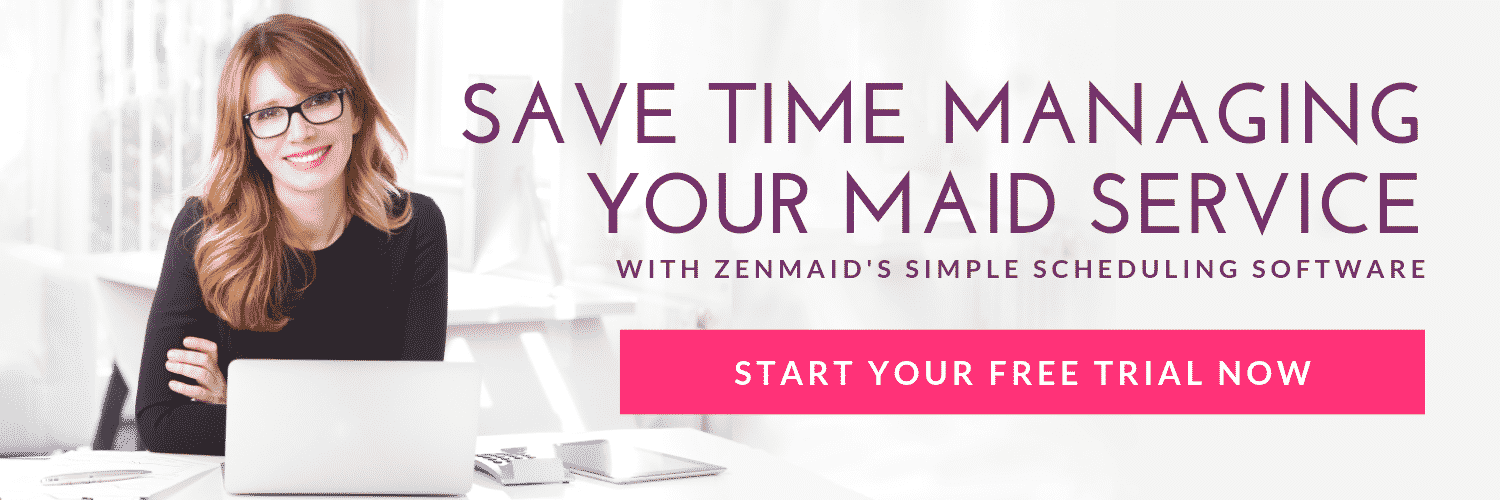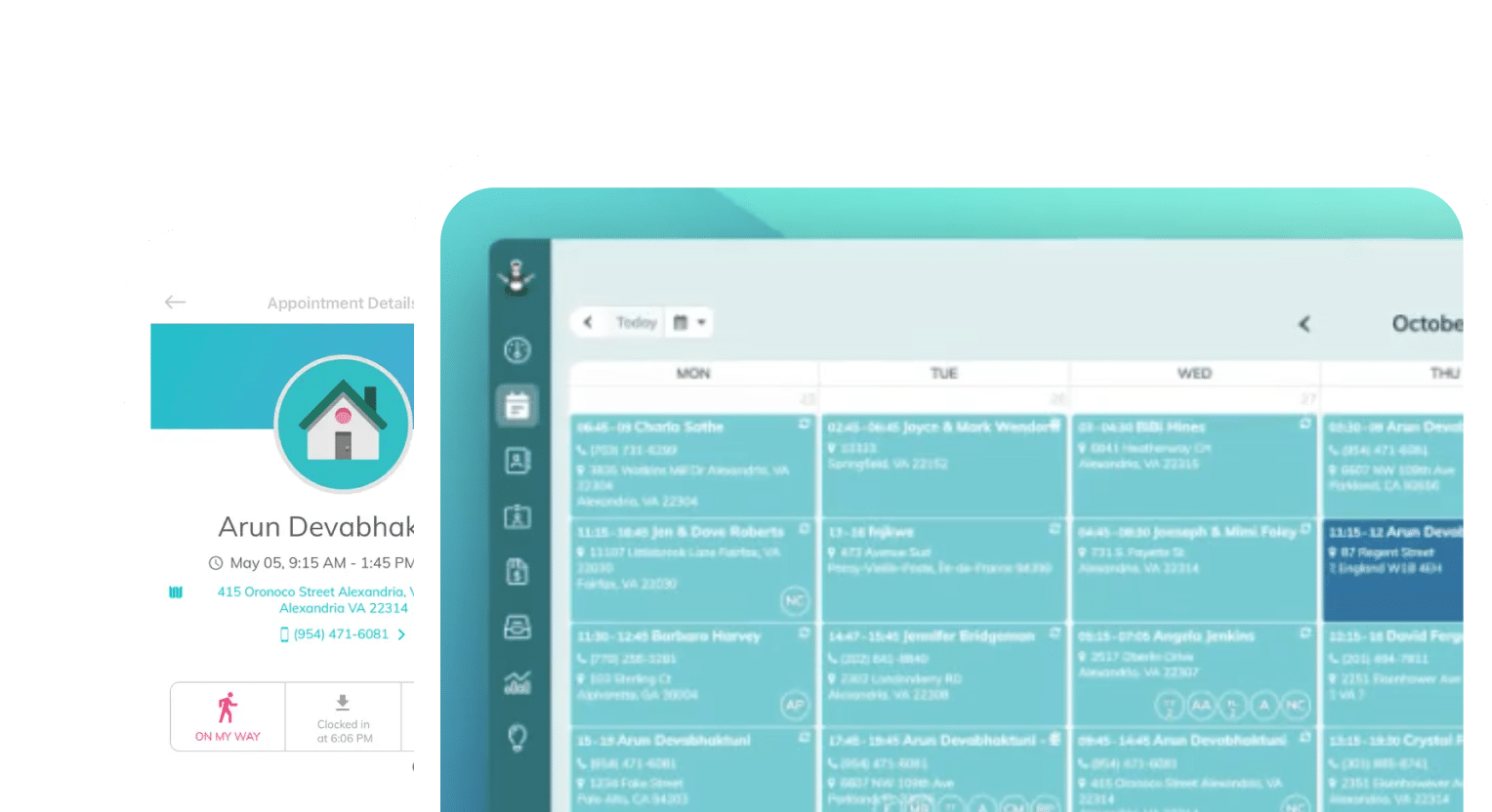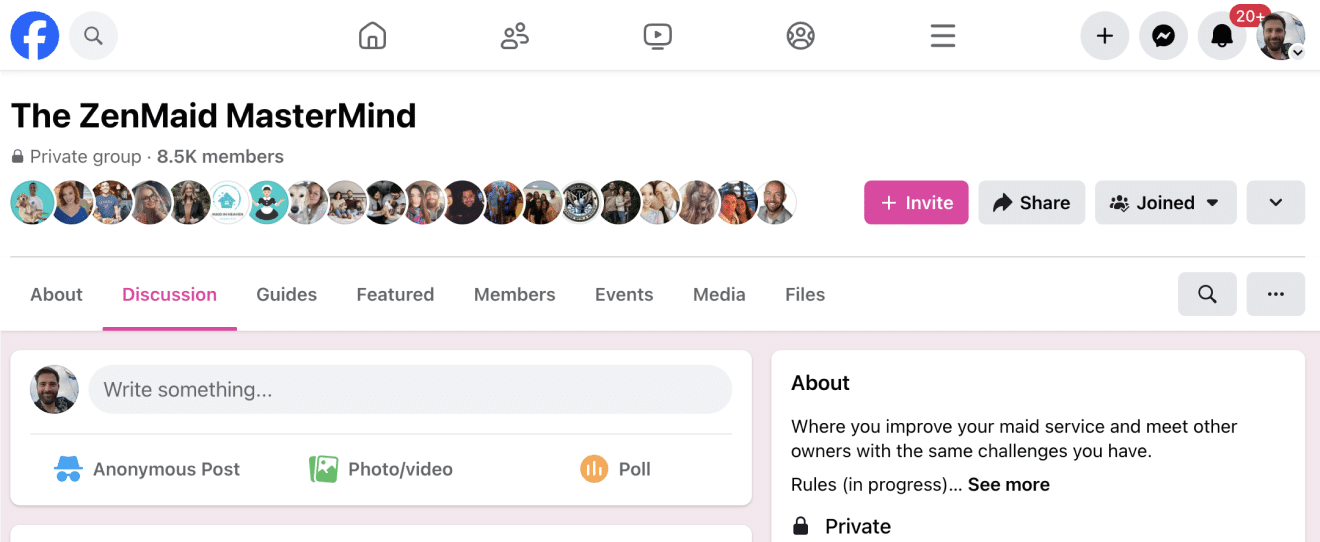Whether you realize it or not, every sale you make is the result of a sales funnel. If your business sells something, it has a sales funnel.
It may not be intentional or optimized, but it exists. Once you’re able to identify what parts of the funnel you already have, your goal becomes to find out where there are gaps and how you optimize that funnel to improve your sales.
If you research sales funnels, you’ll likely be bombarded with hundreds of opinions about what your sales funnel should include. While there are a few different variations of the funnel depending on what marketing channels you use, the sales funnel’s fundamental sections tend to be consistent.
In this post, we’ll break down the key steps maid service owners should include in a sales funnel to maximize the chances of moving customers through the entire funnel to the final sale.
Table of contents
What is a Sales Funnel?
A sales funnel is the process that businesses use to lead customers through a set journey. This journey usually starts by building awareness of your brand or the problem you solve and ends with the lead turning into a paying customer.
The sales funnel is divided into multiple steps, and within each step, your goal is to build more trust with your audience and nurture the relationshi[p until they are ready to buy your service.
80/20 rule
When working on your sales funnel, keep in mind the 80/20 rule. This states that 80% of your outcomes stem from about 20% of your efforts. This rule is likely to apply to all aspects of your business.
Take a look at which of your efforts are reaping the most reward. 80% of your profits likely come from 20% of your customers. Or it may be that 80% of your leads are coming from 20% of your marketing efforts. Identify that 20%, and you can then try to maximize and optimize your efforts in that area.
Now let’s break down the seven steps of the sales funnel that your maid service can benefit from most.
1. Define your dream client avatar
Before you can start advertising your services, you need to identify your ideal customer avatar. You probably already have a few of these customers in your roster that you can draw inspiration from.
These customers are easy to work with, leave you great reviews, bring in referrals, and are generally happy with the service you provide. Model your avatar after these customers and try to learn as much as you can about them.
It can be helpful to survey a few of these customers to dive deeper into the reasons why they like your service and continue to hire you.
Then you can use this information to create marketing materials based on real feedback from your users. This will be the key to attracting more customers like them.
2. Raise awareness of your business
Now identify how much awareness your audience has about your business and your services as a whole.
Are your customers aware of their problem, or do they need you to educate them that a problem exists?
With most cleaning businesses, you won’t need to sell your audience so much on the problem they face but on the solution that you provide. Cleaning customers tend to be problem-aware and are mainly looking for the right solution for their specific needs.
In this case, the awareness stage will make your audience aware of your business, services, and solution you provide.
There are a few different ways you can raise the awareness of your brand. You can invest in advertising through Facebook ads or Google Ads. You can also put effort into your SEO strategy by ensuring that your website and pages are optimized so that your business shows up in local Google searches.
Identify which marketing channels are bringing the most leads and allocate more time and resources towards those channels.
3. Preframe your offer
Before you can make a sale, you need to make sure that your audience is in the right frame of mind. Creating a relevant preframe will ensure that your customer has everything they need to know before presenting them with a call to action.
By providing this information upfront, you’ll increase the chances of qualified leads filling out your forms or making a phone call. You’ll also be able to know that the majority of the leads that come through are ready to buy.
Get creative about how you market your services and try to hone in on the actual value you bring to your customers.
For cleaning services, this can mean selling the feeling of a clean home, more time with their families, or time to do other things besides cleaning. You’re not just selling a few hours of your time. You’re selling them the peace of mind of a clean home and everything that a clean home affords them.
4. Collect important information
Once you’ve pre-framed your offer with information that gets your audience in the right frame of mind and tells them more about you, it’s time to capture that lead.
Depending on how you are marketing to your audience, make sure you have a clear call to action and collect all of the information you need to follow up with your customer and make the sale.
Collecting the lead usually involves the customer requesting a quote or booking an appointment. Make sure you’re asking for all of the information you need including their name, phone number, email, and other relevant information such as their zip code or the size of their home.
If your CTA doesn’t directly result in a booked appointment, you can use the information you collected to continue to nurture the relationship with an email or a phone call. If you’re doing paid advertising, you can even target them with paid ads to increase the number of touchpoints and encounters they have with your business.
5. Go for the sale
The previous four steps are all in place to set you up for the best chance to make a sale. Now is the time to make your customer an offer and try and get the sale. Here is where you finally ask them to book the appointment.
You can get creative with this process, but the goal is to have the customer spend money, no matter how small the amount. This will solidify their commitment and show you that they are willing to spend money with you in the future.
If they are not ready to book an appointment, you can sell them a gift card or a package they can redeem once they are ready to schedule their cleaning.
6. Present an opportunity for an upsell
Once a customer has committed to using your service, this is an excellent opportunity to offer them additional services or add-ons that they may not be aware of that you sell.
These can include aromatherapy options, pet cleaning services, carpet cleaning, car cleaning, or any other service you provide for an additional fee.
Allowing them to add these directly from the purchase will increase the likelihood of someone opting for these features. Even if only a tiny percentage of customers go for the add-on, that extra boost of income can make a huge difference at the end of the month.
7. Referrals, reviews, and recurring bookings
The last step of the funnel is to follow-up with your customer after the cleaning and continue to nurture the relationship. This is where you ask them for feedback on their cleaning, present an offer to make their next booking or let them know about a referral program if you offer one.
This step is a great place to ensure that you are staying on top of quality control and making yourself available to feedback that they may have before they write an online review. You can also provide a review link and encourage them to leave a review if they had a good experience.
Final Thoughts
It’s okay if your current funnel doesn’t have seven steps or if you notice some gaps in your marketing systems. Your sales funnel should be a constant work in progress. As your business evolves and grows, you can gradually start adding new parts to your sales funnel and identifying new ways to optimize your current systems.
For a more in-depth look at how to incorporate these steps into your sales funnel, check out Owen’s full presentation from the 2020 Maid Summit.
About the presenter
Owen Lutz is a self-proclaimed master of lead generation and founder of Cleaning Leads Fast. In this post, we’ll outline his seven-step sales funnel that every maid service owner should work towards implementing.
This talk first aired at the 2020 Maid Service Success Summit.
The Maid Summit is an annual online event that brings together the most successful leaders in the cleaning industry, like Debbie Sardone, Angela Brown, Courtney Wisely, Amy Caris, Chris Schwab and more. Get free access to masterclasses and workshops that will help you to grow, scale and automate your cleaning business so you can get more leads and create more profit. Make sure you’re on our email list to find out how to get free tickets to the next event.
Find more great articles like this one on ZenMaid Magazine:
- Stop Overpaying: How to Save $10K+ a Year in Your Cleaning Business
- How One Cleaning Tech Employee Becomes Irreplaceable
- What I Wish I Had in Place *Before* My First Nightmare Client
- The Divorced, Broke, and Fearless Journey to Six-Figure Vacation Rental Success
- How a 20-Year Cleaning Business *Drastically* Increased Revenue by Ditching Pen and Paper

 Frustrated with your scheduling? Try the easiest-to-use calendar app, made by and for maid service owners.
Frustrated with your scheduling? Try the easiest-to-use calendar app, made by and for maid service owners.










